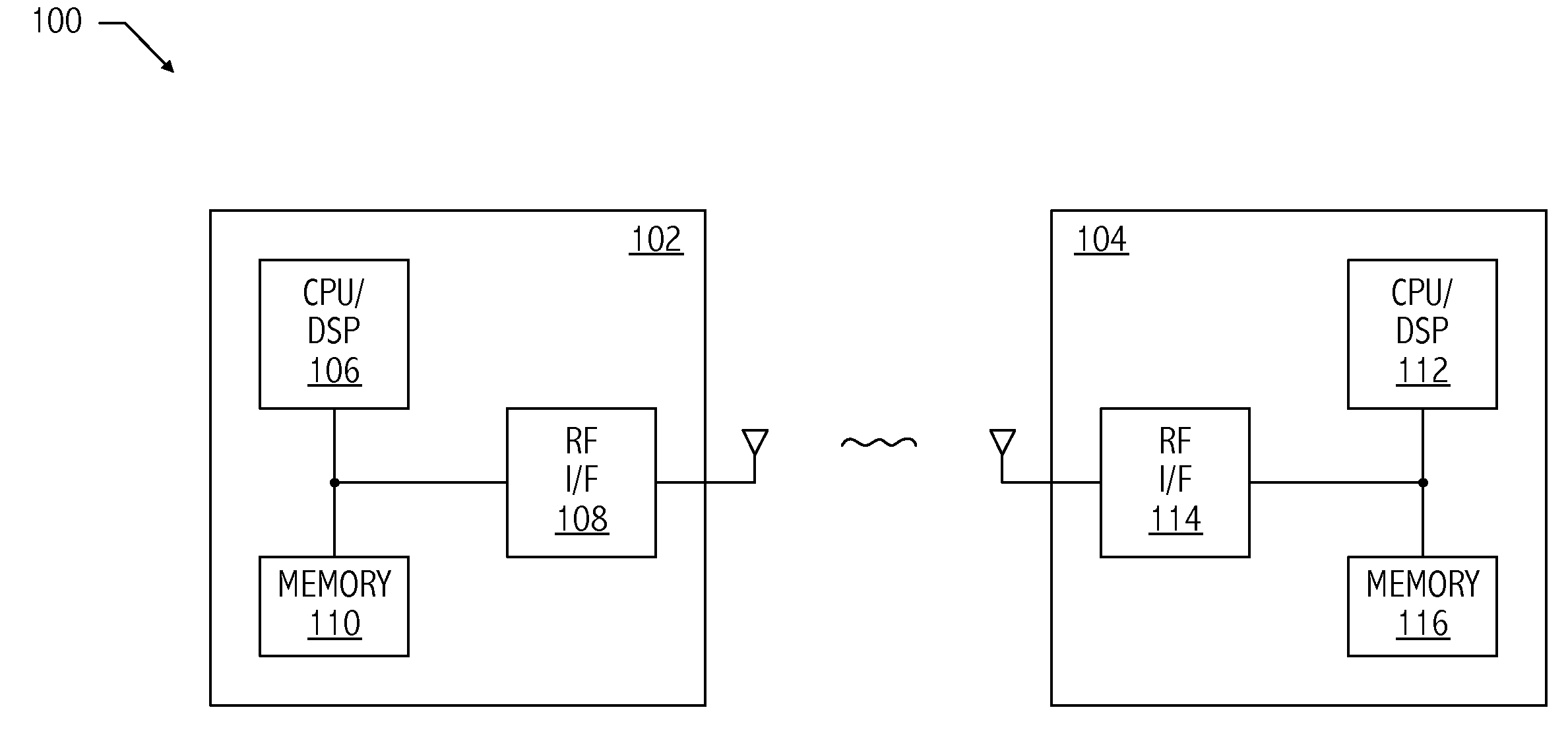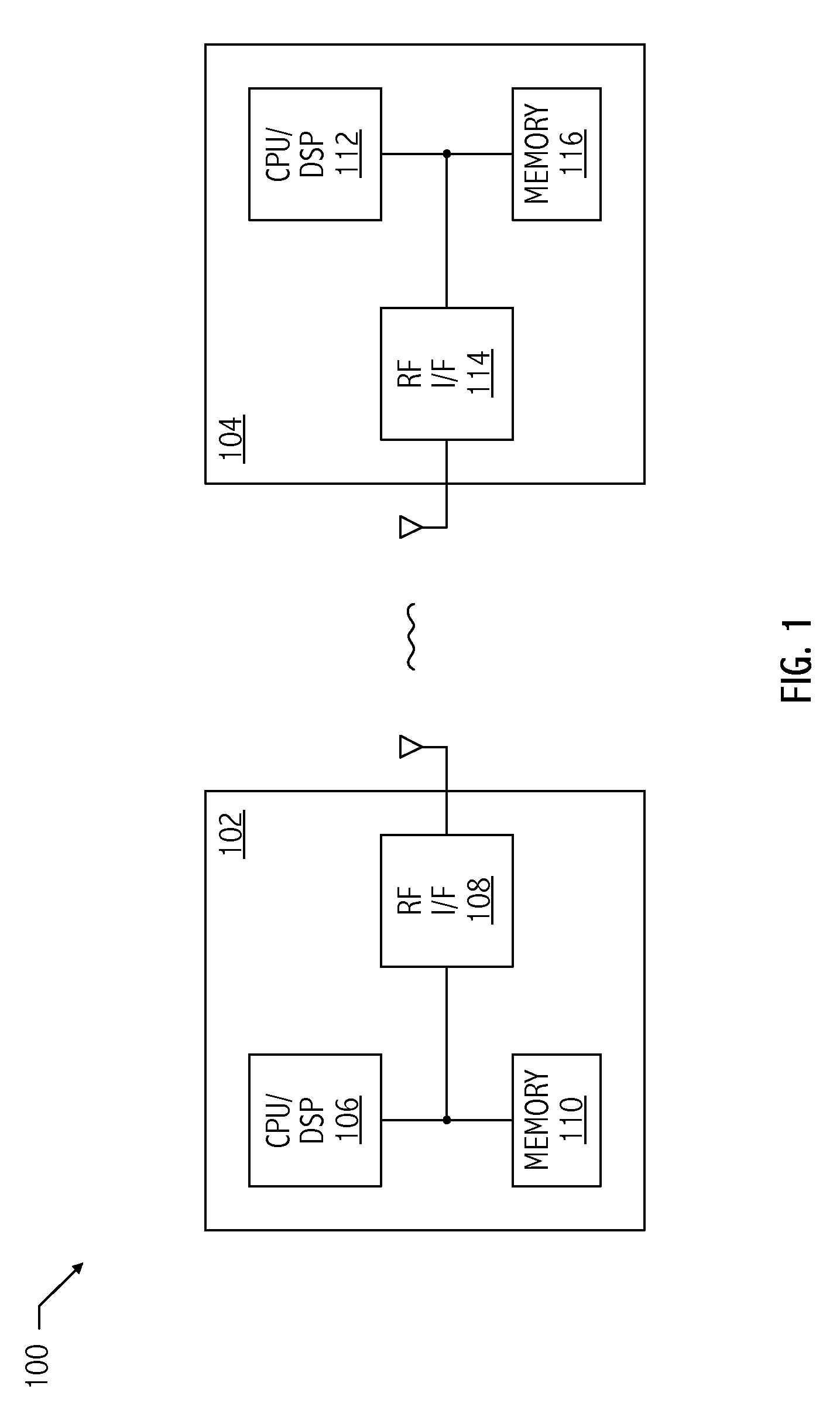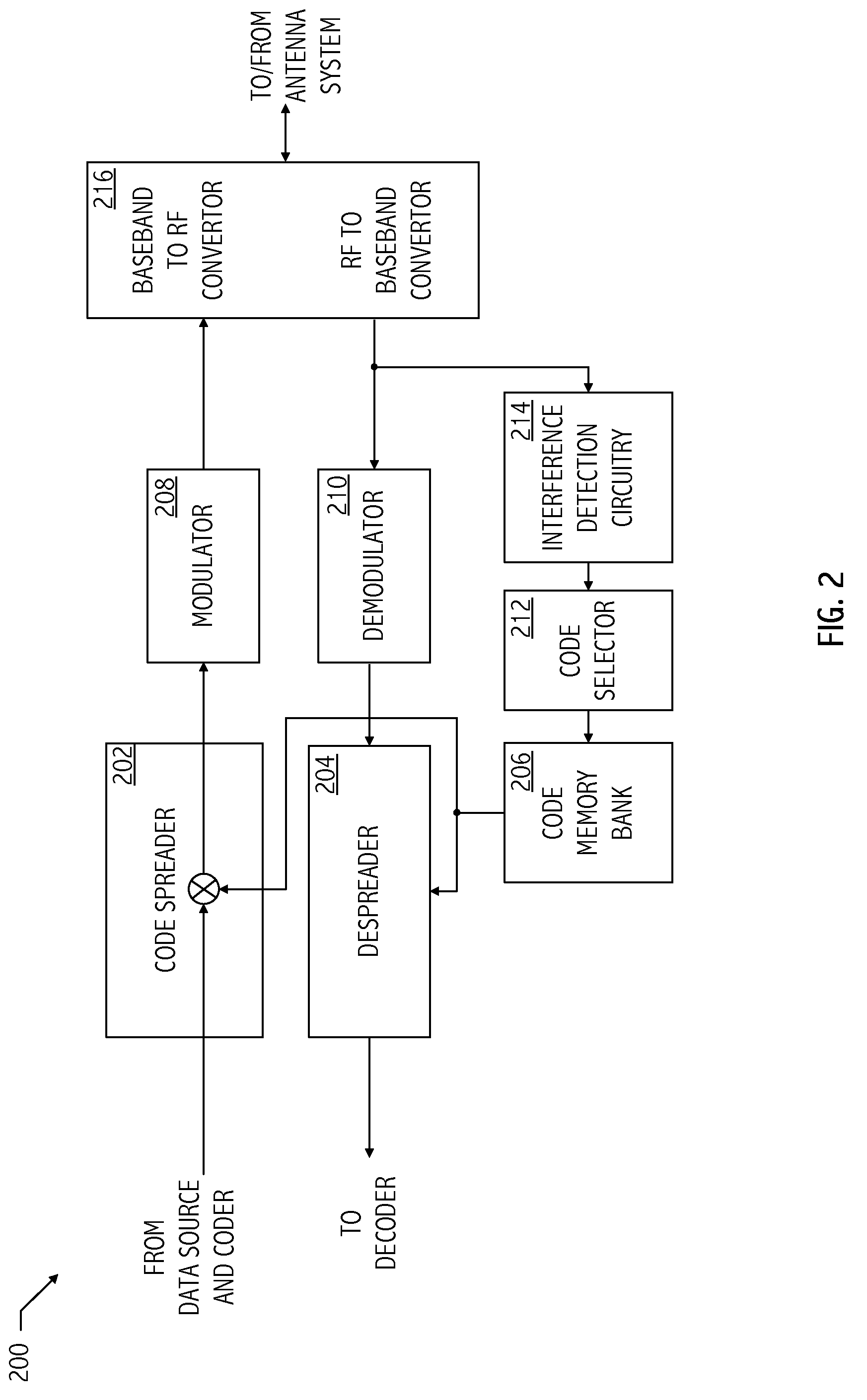Narrowband interference rejection for ultra-wideband systems
a narrowband interference and ultra-wideband technology, applied in the field of interference between communications systems, can solve problems such as degrading the performance of one or both of these communications systems, and achieve the effects of reducing interference, signal power, and power
- Summary
- Abstract
- Description
- Claims
- Application Information
AI Technical Summary
Benefits of technology
Problems solved by technology
Method used
Image
Examples
Embodiment Construction
)
[0018]Referring to FIG. 1, an exemplary wideband communications system (e.g., wideband communications system 100) includes two wideband communications units (e.g., communication unit 102 and communication unit 104) that communicate wirelessly over a wide frequency band of the electromagnetic spectrum (e.g., frequency bands having a range of one or more GHz). Communication units 102 and 104 each include a radio-frequency interface, processing circuitry, and storage circuitry. The processing circuitry may include one or more of application-specific logic, a digital signal processor circuit configured to execute instructions stored in a storage device, a general purpose processing unit configured to execute instructions stored in a storage device, or other suitable circuitry for performing information processing and signal communications functions.
[0019]In at least one embodiment of communications system 100, wideband communications system 100 uses a direct-sequence spread spectrum mo...
PUM
 Login to View More
Login to View More Abstract
Description
Claims
Application Information
 Login to View More
Login to View More - R&D
- Intellectual Property
- Life Sciences
- Materials
- Tech Scout
- Unparalleled Data Quality
- Higher Quality Content
- 60% Fewer Hallucinations
Browse by: Latest US Patents, China's latest patents, Technical Efficacy Thesaurus, Application Domain, Technology Topic, Popular Technical Reports.
© 2025 PatSnap. All rights reserved.Legal|Privacy policy|Modern Slavery Act Transparency Statement|Sitemap|About US| Contact US: help@patsnap.com



